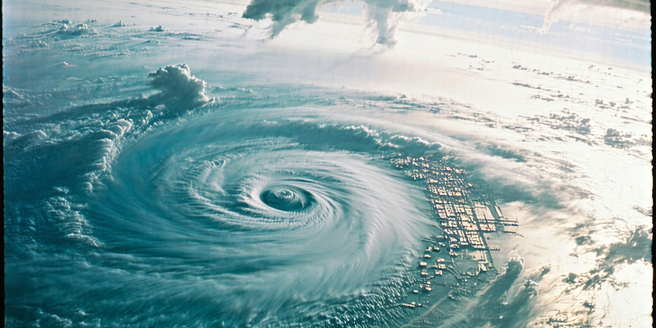
Introduction to Weather Science Tools
In the fascinating field of weather science, a variety of tools are used to understand and predict atmospheric conditions. Instruments like barometers, anemometers, and hygrometers provide essential data on pressure, wind speed, and humidity. Satellites and radar systems offer a comprehensive view of weather patterns, enabling meteorologists to forecast with increased accuracy. These tools are complemented by computer models that simulate weather dynamics, offering detailed predictions and visualizations. As technology evolves, the integration of AI and machine learning into weather science tools is expanding our capabilities to analyze vast datasets and improve prediction accuracy. Overall, these tools play a vital role in weather analysis and education. By introducing these instruments and technologies in educational settings, students can grasp the complexities of meteorological phenomena and contribute to advancements in the field.
The Role of Technology in Meteorology
Technology has revolutionized the field of meteorology, providing tools that enhance our understanding of complex atmospheric processes. Advanced radar systems enable meteorologists to track storm systems in real time, significantly impacting weather prediction. Satellite technology offers a global view of weather patterns, enhancing predictive models. The integration of computers allows for sophisticated simulations and data analysis, improving accuracy and forecasting. Additionally, mobile technology and apps put weather prediction in the hands of the public, making weather conditions easily accessible. Cloud computing and big data analytics allow processing of vast amounts of meteorological data, offering insights previously unimaginable. As technology continues to evolve, its marriage with meteorology will undoubtedly lead to more accurate forecasts and better understanding of our planet’s weather, highlighting the importance of technology in this field.
Educational Software for Weather Analysis
The advent of educational software for weather analysis provides an interactive and engaging means to learn about meteorology. Software tools like weather simulation programs enable students to manipulate variables and observe the outcomes on weather patterns in real-time. This hands-on approach helps build a solid understanding of meteorological concepts, as students can explore various weather scenarios and their impacts. Programs often include detailed visualizations, from cloud movements to storm development, bringing textbook lessons to life. Additionally, they enable the study of climate change impacts and historic weather events. By integrating such software in educational curricula, educators can foster a deeper interest and understanding in weather phenomena. As educational technologies advance, these software tools will grow more sophisticated, offering even richer insights into the science of weather.
Hands-On Learning with Weather Instruments
Hands-on learning with weather instruments can significantly enhance the educational experience for students interested in meteorology. Actual instruments like thermometers, barometers, and anemometers allow students to directly measure and observe atmospheric conditions. This practical engagement reinforces theoretical knowledge, as students correlate data with weather phenomena. Through experiments and fieldwork, learners can grasp concepts like wind velocity or atmospheric pressure dynamics. Such tangible interaction helps demystify meteorological concepts, making them accessible and understandable. Schools with weather stations offer even more comprehensive insights, allowing long-term data collection and analysis. Encouraging students to engage with real-world tools fosters curiosity and skills necessary for future careers in meteorology. By integrating hands-on experience with theoretical learning, educators create a more dynamic and effective environment for understanding weather patterns and predicting changes.
Online Resources for Weather Education
Online resources for weather education have made learning about meteorology more accessible than ever. Numerous websites offer comprehensive weather data, forecasts, and educational content suitable for varying levels of interest and expertise. Free courses and webinars, hosted by meteorologists and academic institutions, are readily available, providing in-depth insights into topics such as climate change, storm systems, and forecasting techniques. Interactive tools and virtual labs allow learners to simulate weather conditions and engage with real-world data. Websites like NOAA and NASA provide rich, educational material, offering a treasure trove of information that supports both teachers and students. As technology advances, more interactive and immersive digital resources will become available, enhancing accessibility and depth of learning. Overall, online resources are crucial in democratizing weather education, bringing the expertise and wonder of meteorology to a global audience.
Future Trends in Weather Science Education
The future of weather science education is set to be transformed by technological innovation and interdisciplinary approaches. Virtual reality (VR) and augmented reality (AR) will likely emerge as powerful tools, allowing students to immerse themselves in simulated weather environments. AI and machine learning will support the development of personalized learning systems that adapt to individual learning paces and styles, providing customized educational experiences. Additionally, gamification strategies can increase engagement, making the study of meteorology exciting and interactive. Interdisciplinary collaboration will also gain emphasis, as understanding weather involves aspects of physics, chemistry, and environmental science. Schools and universities are expected to integrate cutting-edge technologies into their curricula, enhancing both teaching and learning. As these educational trends evolve, they promise not only to enrich meteorology education but also to prepare students for dynamic careers in weather-related fields.
